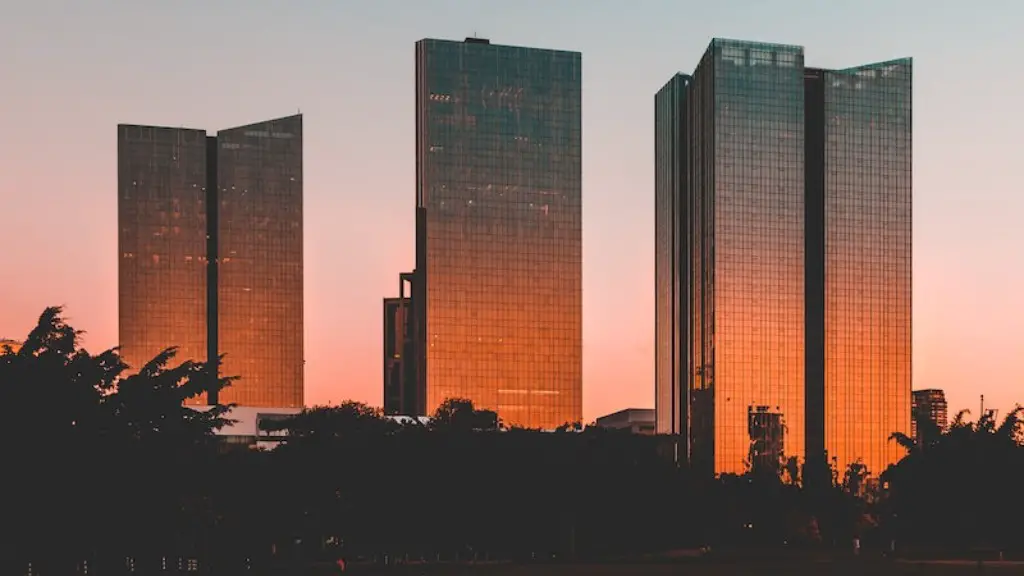Mental and Physical Wellbeing of the Homeless Negatively Impacted by Anti-Homeless Architecture
As homelessness in the United States and abroad continues to rise at unprecedented levels, so does the development of architecture designed to curtail or even adamantly reject its presence. This phenomenon, known as “anti-homeless architecture”, comprises of designs and placements intended to make sleeping rough, sitting long periods of time or begging less accessible or outright discouraging. The tactics used serve to reinforce the idea that without providing direct services to those in need they are no longer welcome in certain spaces.
One of the most common tactics used by those wishing to “discourage” homelessness is the installation of armrests on park benches. This prevents individuals from lying down and further serves to alienate the homeless community. Similarly, thin or spike beds are often planted in areas where homeless people congregate in order to make any rest or sleep on the pavement or ground increasingly uncomfortable. Such techniques are intended to ensure the homeless’ continued marginalization, as the otherwise “gentrified” spaces become subtly inhospitable to those that cannot afford adequate housing, thereby alienated and rendered invisible.
The psychological effects of anti-homeless architecture are particularly detrimental as they often reinforce the social stigma of homelessness. In a city that refused to acknowledge their existence, the homeless become easy targets for mistreatment and verbal harassment. Furthermore, the rejection of outright services is often counteracted with police brutality and arrests, thus leading to further criminalization of their state, further erasing the civil and religious rights of those without shelter.
Physically, anti homeless architecture impacts the health of homeless people due to the lack of access to even basic facilities essential for self-care. The fear of being harassed and discriminated against means people tend to forego basic hygienic rituals such as brushing teeth and washing, leaving them more prone to illness and disease. Homeless also become increasingly exposed to weather conditions as a lack of curb appeal and other deterrent products makes it harder to find areas where they are comfortable to rest and sleep in the elements. This can lead to further distress and possible exhaustion, causing further harm to their limited frame of health.
Alternative Perspectives to Combatting Homelessness
The argument can be made that the hostility of anti-homeless architecture acts as an attack on poverty, rather than homelessness. By disrupting the presence of the homeless in these spaces, the hope is to diminish the visibility of the growing destitution in cities across the country. However, while such measures may succeed in safeguarding the decreased occupancy of certain places, it does little to address the root problems of poverty and homelessness, leading to a dangerous cycle of displacement and poverty that continues to plague our society.
In the absence of effective policy, a number of charities, local organizations, and even government bodies recognize that humanitarian gestures such as meal programs, adapted accommodation and other services, are essential for combating this issue. Therefore, we should be aiming towards solutions that provide practical help, such as housing and resources, instead of turning to a patchwork of unpleasant architecture to drive away the homeless.
Counteracting the Crisis of Homelessness
Effective long-term solutions lie in the public sector providing affordable urban housing so that people can be provided with a safe and secure place to live. Provisioning government-funded housing initiatives to ensure that homelessness decreases and those in need can access long term accommodation would ensure the physical and mental health of the homeless are adequately addressed.
Precise scientific reflection and research is being undertaken to measure the scope and ramifications of anti-homeless architecture, with more social science classes being added to the curriculum. Social activists and audio-visual platforms work to raise awareness and give insight into the situation. Free health care and dedicated social workers relentlessly strive to counter homelessness and provide relief to those affected. In countries like the United States, some cities are providing services that are directed at helping homeless people and creating tailor-made responses to provide support and resources on a greater scale.
Harnessing the Power of Social Media
The internet and social media have created new ways for people to interact, inform, and express opinions, making it a powerful and direct platform for social change. Non-profit organizations and activists are now actively utilizing online public outreach to bait public attention and increase public awareness. Many homeless rights advocates have been vocal about combating anti-homeless architecture, engaging the public and the private sector, and inviting the help of businesses, city authorities, and non-profit organizations to create shelter, sustenance and meaningful employment for the homeless.
The use of online petitions and fundraising campaigns has also been utilized to successfully challenge and remove a number of anti-homeless architecture constructs including spikes, benches, and metal studs, allowing the homeless to feel welcome in a space where once they were not. There has been a global trend of cities such as Amsterdam, Tokyo and Toronto that are starting to design and embrace more compassionate housing options that help to alleviate homeless people’s suffering and move them out of the cycle of poverty.
Role of Non-Governmental Organizations
The initiatives taken by the private sector and promoting businesses can also contribute significantly to countering homelessness. Collaborations between government bodies, non-governmental organizations and private sector industries have been set up to fund innovative projects that provide safe and affordable housing as well as resources for homeless people. Organizations such as Architects for Society, Toynbee Hall, Common Ground, and Street Sense have all been actively working towards reducing homelessness, raising awareness and design solutions such as housing banks, communal areas and sheltered housing.
The contributions from the private sector has been instrumental as they take the shape of constructions, contribution of funds, donating materials, and offering volunteering programs. With the private sector making such an impact in providing resources, there is more potential for change and lasting solutions to end homelessness.
Addressing Cultural Stigmas and Perceptions
One of the greatest barriers to successful interventions for the homeless is the cultural attitude that marginalizes its members and prevents understanding of their plight. The widespread establishment of anti-homeless architecture further reinforces their stereotypes as dangerous or unworthy of shelter, creating a clean and calculated barrier from the public sphere that prevents homeless people from being accepted and understood as individuals.
It is therefore essential to challenge the perception of the homeless and help boost the social acceptance of their plight. Greater visibility of the issue, gaining a better understanding of the obstacles and factors that lead to homelessness, and developing understanding and respect for homeless individuals could all help to improve their position in society. This can be done through media campaigns, advocacy, education and policy suggestions.
Impact of Homelessness on the Surrounding Environment
The impact of anti-homeless architecture has consequences far beyond just social stigmas and criminalization. Homeless encampments can bring noise, traffic, drug use and sanitation concerns that can disrupt the quality and atmosphere of a community. However, oftentimes, the lack of housing and other resources contributes mainly to these issues as homeless people lack options to keep them out of public and social sight. In this way, homeless people become a pawn of their own exclusion.
A systematic effort should be taken to integrate members of the homeless population into society and provide adequate resources and education that would allow them to lead a dignified life, free from harassment and reject. Providing adequate infrastructure development, access to resources and developed housing projects are essential aspects that should be undertaken to address the issue of homelessness.
Overcoming Barriers to Combatting Homelessness
Anti-homeless architecture serves as a crude, albeit effective, way to reduce the visibility and accessibility of the homeless from public life. However, given the overwhelming odds of poverty and homelessness, the implementation of permanent solutions, such as adequate housing, must be the priority.
In addition, strategies such as providing homeless individuals with the right to vote, legal advice and health care are slowly becoming less of a dream and more of a reality, showing that when given the right resources and help – the homeless can not only lift themselves out of poverty, but also become contributing members of society.
Alivating Homelessness Through Design and Architects
In many cases, architects, designers, and homeowners can make a difference. By rethinking and adopting a more human-centered point of view, the professionals and society as a whole can make significant changes. Solutions such as shelters and services for individuals and families in need, public showers, cool-down spaces, public libraries and cultural spaces, can all be instrumental in combating homelessness in a subtle and humane way.
Architectural initiatives such as the Arc of Juxtaposition or Streets of Dreams, for example, have been doing a phenomenal job in providing creative and design-centered solutions. The projects demonstrate what a group of motivated individuals and architects can do when they build a conscious, collective goal, and a society that wants to be part of change.
Engaging the Private Sector to Create Sustainable Solutions
While the government can provide vital services, access to resources and housing, private partners and individuals can also create a substantial difference in their local communities. Businesses and corporate entities across the country are investing in projects to reduce homelessness in their neighborhoods and provide emergency services and safety nets. These social programs offer both emergency and permanent housing options, covering meals, employment and mental health services.
Similarly, fashion brands such as Kenneth Cole, Urban Outfitters and American Eagle Outfitters are also utilizing the power of their platform to reach out to homeless people with their collections of jackets, backpacks and other products that provide both warmth and visibility for individuals. Through design, grassroots campaigns, and long-term investments, the private sector can create lasting solutions and help make homelessness a cue for the past.


